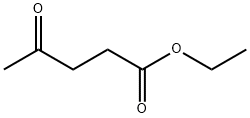
2-Methyltetrahydrofuran synthesis
- Product Name:2-Methyltetrahydrofuran
- CAS Number:96-47-9
- Molecular formula:C5H10O
- Molecular Weight:86.13

534-22-5
291 suppliers
$10.00/5mL

96-47-9
420 suppliers
$15.00/25mL
Yield:96-47-9 100%
Reaction Conditions:
with 3% Pd/C;hydrogen in isopropyl alcohol at 219.84; under 25858.1 Torr; for 5 h;Inert atmosphere;
Steps:
2.i; 3.g g) Screening of substrates
Batch reactions were carried out in 300 mL capacity autoclave at an agitation speed of 1000 rpm supplied by Parr Instruments Co. USA. The typical hydrogenation conditions were: temperature, 493 K; hydrogen at a pressure in the range of 3-4 MPa; furfural concentration, 5 wt%; solvent 95 mL and catalyst loading, 0.5 g.; Ten gm of the powder catalyst was charged in to the reactor. The section of 7 x 10-2 m above and 7 x 10-2 m below the catalyst bed was packed with carborandum as an inert packing, and remaining reactor was filled with catalyst powder in four sections, where the sections are separated by carborandoms. Before starting the actual experiment the reactor was flushed thoroughly, first with N2 and then with H2 at room temperature. Then the reactor was pressurized with H2 after attaining the desired temperature. The liquid feed was "switched on" after the reactor reached the operating pressure and was kept at that value for 1 h to obtain the constant liquid flow rate. Liquid samples were withdrawn from time to time. Samples taken during the reaction were analyzed with a Trace GC 700 series GC System (Thermo SCINTIFIC) coupled with FID detector and capillary column (HP-5 capillary column, 30 m length X 0.32 mm id). The following temperature programme method was used for GC analysis: 40 °C (3 min)-l°C/min-45 °C (1 min) -10°C/min-60(0 min) -20°C/min-250(1 min). Following this procedure, the experiments were carried out at different inlet conditions of liquid and gas flow rates. The reactor was operated in the temperature and pressure ranges of 423-513 K and 20-50 bar, respectively. Steady-state performance of the reactor was observed by analysis of the reactant and products in the exit stream. The conversion and selectivity were calculated and defined as follows; Batch reactions were carried out in 300 mL capacity autoclave at an agitation speed of 1000 rpm supplied by Parr Instruments Co. USA. The typical hydrogenation conditions were: temperature, 493 K; hydrogen at a pressure in the range of 3-4 MPa; furfural concentration, 5 wt%; solvent 95 mL and catalyst loading, 0.5 g; In order to understand the reaction mechanism, the different FFR hydrogenation products were taken as substrate and tested on same reaction parameters the results are shown in Table 2. It was observed that on hydrogenation only corresponding ring hydrogenated products were formed. So from the results it was confirmed that the hydrogenation of the FFR to THF carried out via furan i.e. first hydrogenation of FFR to furan and then to THF. Reaction Conditions: Substrate, 5% (WAV); Solvent, Isopropyl alcohol (95 ml); Temperature, 493K; Pressure 500 psi; Agitation Speed, 1000 rpm; Catalyst, (3%PdMFI), 0.5 gm; Catalyst, 0.5 gm; Reaction time 5h.
References:
WO2014/118806,2014,A1 Location in patent:Page/Page column 10-11; 13-15

98-01-1
472 suppliers
$22.00/25g

96-47-9
420 suppliers
$15.00/25mL

534-22-5
291 suppliers
$10.00/5mL

123-76-2
454 suppliers
$5.00/25g

96-47-9
420 suppliers
$15.00/25mL

6032-29-7
166 suppliers
$14.00/5mL

539-88-8
340 suppliers
$5.00/5g

96-47-9
420 suppliers
$15.00/25mL

123-76-2
454 suppliers
$5.00/25g

96-47-9
420 suppliers
$15.00/25mL